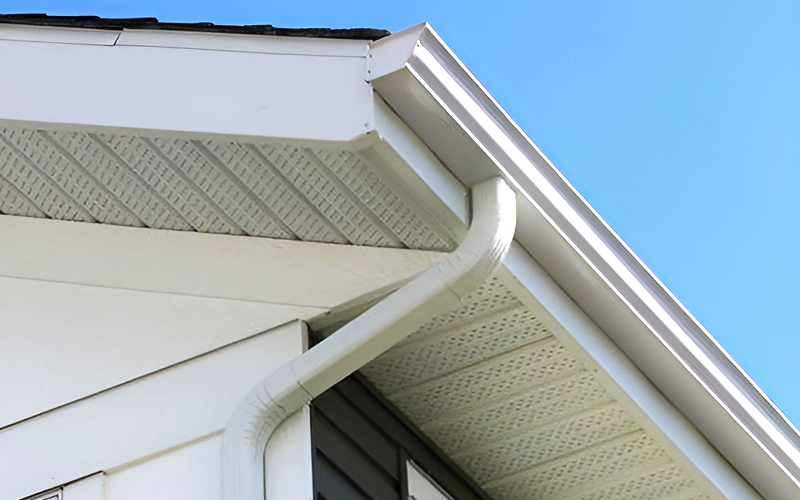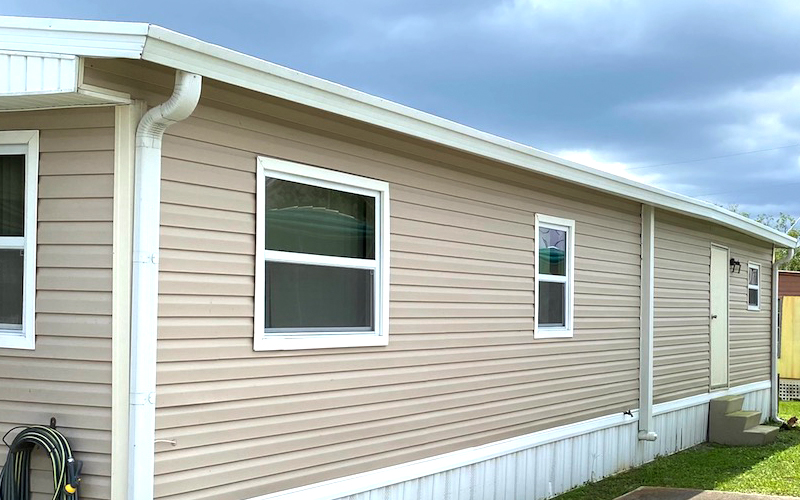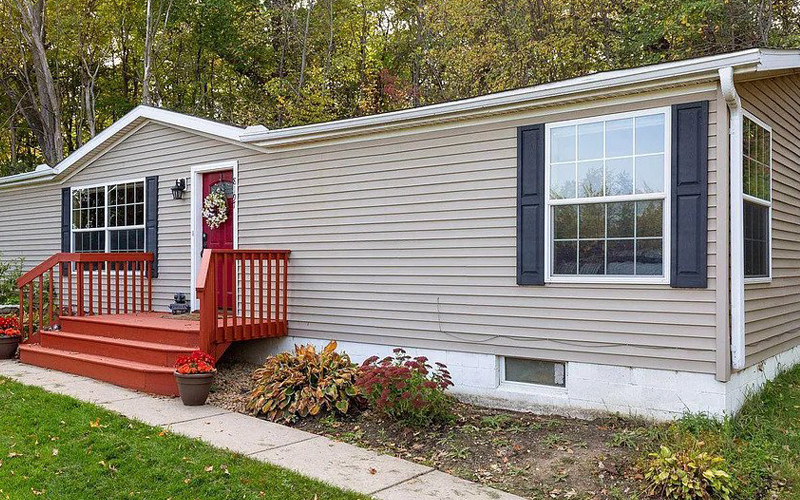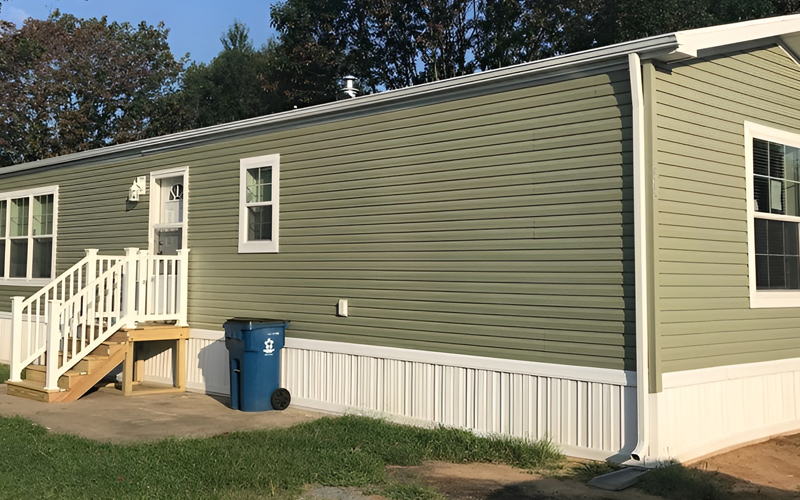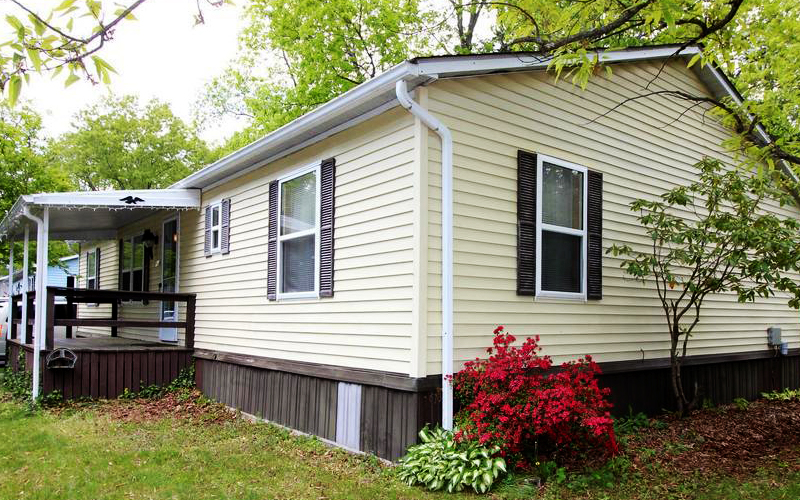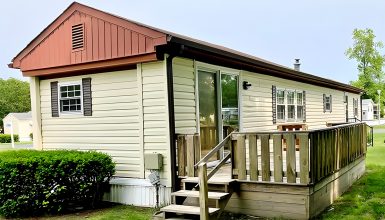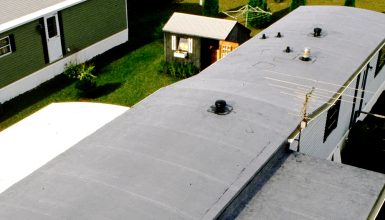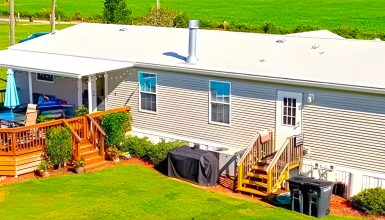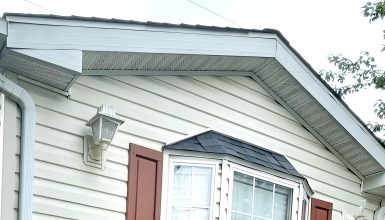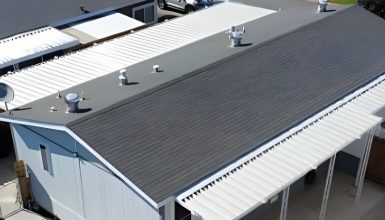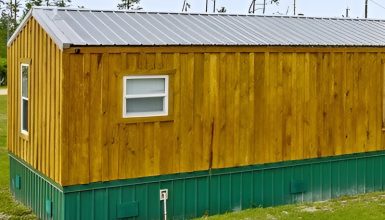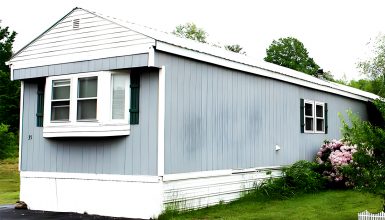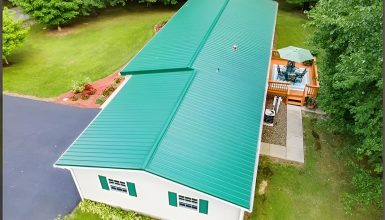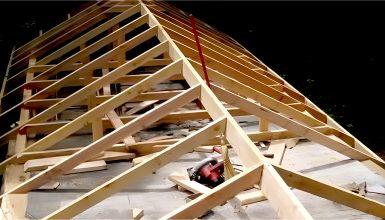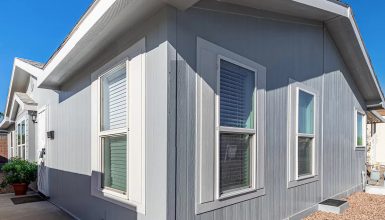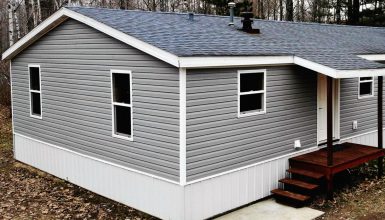Gutters are the unsung heroes of your mobile home, quietly directing rainwater away to keep your cozy nooks dry and damage-free. They also protect your home’s structure, preventing water from seeping into the walls, foundation, and underbelly. This guide will explore everything you need to know about mobile home gutters – the types, sizes, and how to install them. So, are you ready to dive deeper? Let’s go!
Types of Mobile Home Gutters
Okay, now that we’ve got the basics down, let’s talk about the different types of mobile home gutters.
1. Aluminum Gutters
First up, we’ve got aluminum gutters. They’re super popular because they’re lightweight, easy to install, and resist rust. Plus, they come in a rainbow of colors to match your home. The downside? They can dent or bend if something heavy hits them. But with some care, they’ll keep your home dry and comfy for years.
2. Vinyl Gutters
Next, we have vinyl gutters. They’re lightweight, super easy to install, and don’t rust. But be careful in cold climates, as vinyl can become brittle and crack in freezing temperatures.
3. Steel Gutters
Then there are steel gutters. They’re strong and can hold up to heavier loads. It means they’re less likely to dent or sag. The catch? They can rust over time if not adequately treated.
4. Copper Gutters
Finally, we have the fancy suit of the gutter world: copper gutters. They’re beautiful, durable, and they don’t rust. Over time, they develop a lovely green patina that gives your home a touch of old-world charm. But remember, they come with a higher price tag.
Mobile Home Gutters Sizes
Alright, we’ve talked about types. Now let’s talk size. First, you have to understand that the size of gutters is all about how much water they can handle. A small gutter might look neat, but you will have problems if it can’t deal with heavy rainfall, you will have problems. Typical sizes for mobile home gutters are:
- Five-inch gutters
These are the most common size for mobile homes. Five-inch gutters are an excellent fit for many homes because they can handle a decent amount of water without being too bulky. They’re just suitable for most average-sized mobile homes.
- Six-inch gutters
These are the ‘large’ size. Six-inch gutters are typically for larger mobile homes or homes in areas with heavy rainfall. If your home has a large roof or you live in an area with a lot of rain, six-inch gutters might be the way to go.
- Mini gutters
Mini or micro gutters are famous for single-wide homes. They’re smaller, more streamlined, and designed to fit spaces where regular ones might be too bulky. Typically, mini gutters are around 2″ in width.
How to Measure for Gutter Size
How do you figure out the right size? Here’s how you do it:
1. Measure the roof’s horizontal edge (the eave)
Use a tape measure to find out the length of the eave. It will help you determine how much gutter material you’ll need.
2. Determine the roof pitch
The roof’s slope impacts how much water hits your gutters at once. You can estimate this by seeing how much the roof rises vertically for every 12 inches it goes horizontally. You’ll need bigger gutters to handle the water flow if it’s a steep slope.
3. Calculate the roof area
You need to know the length and width of your roof. Multiply these two numbers to get the area. More extensive roofs need larger or more gutters to handle all the water.
4. Consider the rain intensity
Remember how we discussed the rainfall in your area? You’ll want to take this into account too. If you live in a place with heavy rain, like Florida, you’ll need large gutters. But if you’re somewhere drier, like Arizona, you can get by with smaller ones.
Once you have these measurements and considerations, you can consult a gutter professional to help determine the best gutter size for your mobile home.
Factors to Consider When Choosing a Gutter Type
So, we’ve talked about the sizes and different types of gutters. But how do you decide which is best for your mobile home?
- Budget
First, let’s talk about the budget. You’ve got to be honest with yourself about how much you can afford to spend. Aluminum and vinyl gutters are typically more affordable, while steel and copper are pricier. But remember, gutters are a long-term investment. Sometimes, spending more upfront can save you cash down the road.
- Weather
Next up, think about your local weather. Steel gutters might be your best bet if you live somewhere with heavy snowfall. They’re strong and can handle a lot of weight. But aluminum or vinyl could be the way to go if your area sees a lot of rainfall. These materials are rust-resistant, perfect for wet climates.
- Maintenance
You’ll also want to consider maintenance. All gutters need love and care, but some require more. For example, steel gutters might need a fresh coat of paint now and then to prevent rusting. While vinyl gutters only need a good cleaning.
- Style
Finally, think about the style of your mobile home. Copper gutters can add elegance, while aluminum gutters offer a more modern, streamlined look.
Choosing gutters might seem tricky, but it’s all about finding the right balance. By taking the time to consider all these factors, you’ll be well on your way to picking the perfect gutters for your mobile home.
Mobile Home Gutter Installation

Now, we’ve reached the big moment – installing your gutters! It’s like assembling a new bookshelf. It might seem tricky, but you can do it with the right tools and a step-by-step guide. So, let’s dive in!
Tools
Before you start, make sure you have everything you need. Here’s what you’ll need:
1. Gutters: First and foremost, you’ll need the gutters themselves. These come in sections that you’ll connect to create a continuous line along the edge of your roof.
2. Brackets or hangers: These secure the gutters to your mobile home. You’ll attach these to your home first and then connect the gutters to them.
3. Screws or nails: These secure the brackets or hangers and connect the gutter sections to your home. Make sure you choose rust-resistant ones to withstand the elements.
4. A ladder: You’ll need a sturdy ladder to reach the edge of your roof. Safety first!
5. A level: This tool will help install your gutters with the correct slope to direct the water to the downspouts.
6. A drill: You’ll use this to secure the screws into your mobile home and the gutters. A cordless drill can make the job easier.
7. Downspouts and elbows: The downspouts are the pipes carrying the water from the gutters to the ground. The elbows are bent pieces that help direct the water from the gutter into the downspout.
8. End caps: These go on the ends of the gutter sections to prevent water from spilling out the sides.
9. Sealant: This waterproof material helps seal the connections between gutter sections to prevent leaks.
Step-by-Step Installation
Now that we have our tools and materials ready let’s get down to the nitty-gritty of the installation process.
1. Mark the gutter line
Start by marking a line along the edge of your roof where the gutters will go. Use your level to ensure the line has a slight slope towards where the downspout will be. This slope is essential – it allows the water to flow down the gutters towards the downspout.
2. Install the brackets
Next, attach your gutter brackets along the line you just marked. Use your drill and screws to secure them to the side of your mobile home. Ensure the brackets are spaced evenly and line up with the slope line.
3. Attach the gutters
Now comes the exciting part – attaching the gutters! Fit it into the brackets and secure them with screws. If you’re using sectional gutters, you must connect the sections. Be sure to apply sealant at each joint to prevent leaks.
4. Install the end caps
Once your gutters are in place, you must attach the end caps. These go on the ends of your gutters to keep the water from spilling out. Use your sealant here to create a waterproof seal.
5. Install the downspout and elbows
The last step is to install the downspout. First, attach an elbow to the gutter where the downspout will be. Then, connect the downspout to the elbow. Secure everything with screws and seal all the joints with sealant.
Maintenance of Mobile Home Gutters
Got your gutters installed? Awesome! But the job isn’t over just yet. You need to maintain them to keep them working correctly. Let’s talk about how to do that:
1. Regular Cleaning
Imagine if you never cleaned your room. Things would get messy fast, right? The same goes for your gutters. Leaves, twigs, and other debris can build up and clog your gutters. Aim to clean your gutters at least twice a year or more if you live in a heavily wooded area.
2. Check for Leaks
Even tiny leaks can lead to big problems. So, play detective and look for any signs of leaking in your gutters. You’re looking for spots where water drips or trickles out. If you find a leak, use a sealant to patch it up.
3. Inspect the Downspouts
Your downspouts are like the exit doors in a theater. They guide the water away from your home. Ensure they do their job by checking that water flows freely out of them and is directed away from your home’s foundation.
4. Tighten Loose Gutters
Sometimes, the gutters can become loose from their brackets. If you notice a wobbly, tighten it back up.
5. Look Out for Rust
Over time, gutters can rust. Rusty spots can eventually become holes, so keep an eye out. If you spot rust, it might be time to replace that gutter section.
Taking care of your gutters is like keeping your room clean – it requires regular effort, but it’s worth it. With these maintenance tips, your gutters will be in top shape to protect your home from water damage.
Conclusion
And just like that, we’ve reached the end of our gutter journey! From understanding why gutters are essential, exploring the different types, and how to install and maintain them. So, whether you choose to DIY or hire a professional, now you have the know-how to ensure your gutters do their job.

